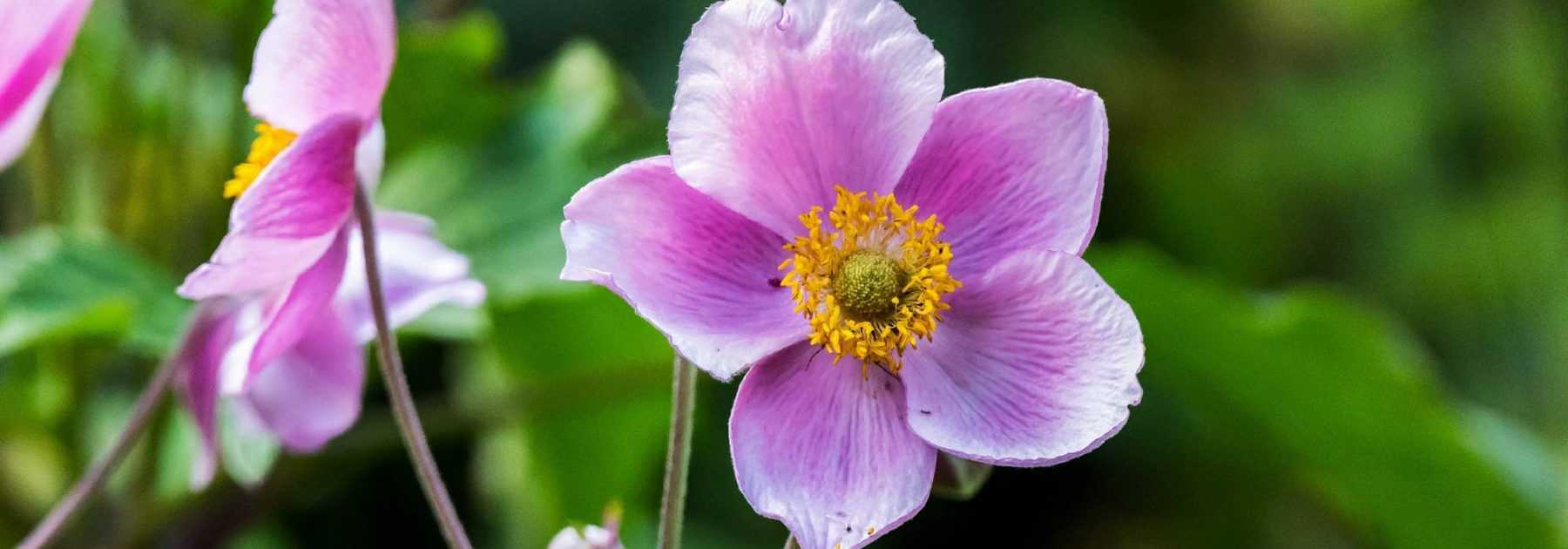
Japanese Anemones: 8 Successful Planting Combinations
Romantic and natural
Contents
Stunning as a backdrop or centrepiece in borders, the Japanese Anemone (Anemone hupehensis) effortlessly blends into all autumn landscapes. With its romantic allure in white or pink, this perennial brings charm to English cottage gardens, mixed borders and traditional parsonage gardens.
It’s also highly fashionable in contemporary meadow-style plantings, paired with ornamental grasses. Its upright habit adds lightness to more structured borders. Graceful and delicate, it thrives in varied planting schemes, bringing undeniable elegance and poetry.
You’ll find it in fresh, romantic white/pink combinations with roses and other late-flowering perennials. It’s one of the key features in shade gardens, where it provides light and contrast, and in white gardens. It’s perhaps best to avoid pairing it with overly contrasting colours that might create discord – its simple charm calls for soft harmonies or a unified colour palette.
Staging Japanese Anemones is extremely straightforward, provided you give them enough space to shine.
Brightening up a shady border
The Japanese Anemone will bring contrast, colour and light until the first frosts to a somewhat dull partial shade border. It is therefore best placed in the centre or at the back of the border, mixed with broad and linear foliage. It thrives alongside its shade-loving companions, such as Ferns, Hostas or Brunneras. Its abundant flowering will bring beautiful luminosity to these rather gloomy areas at this time of year. The lightness of its stems will help to open up an overly dense border. Opt for white varieties to subtly brighten this leafy environment.
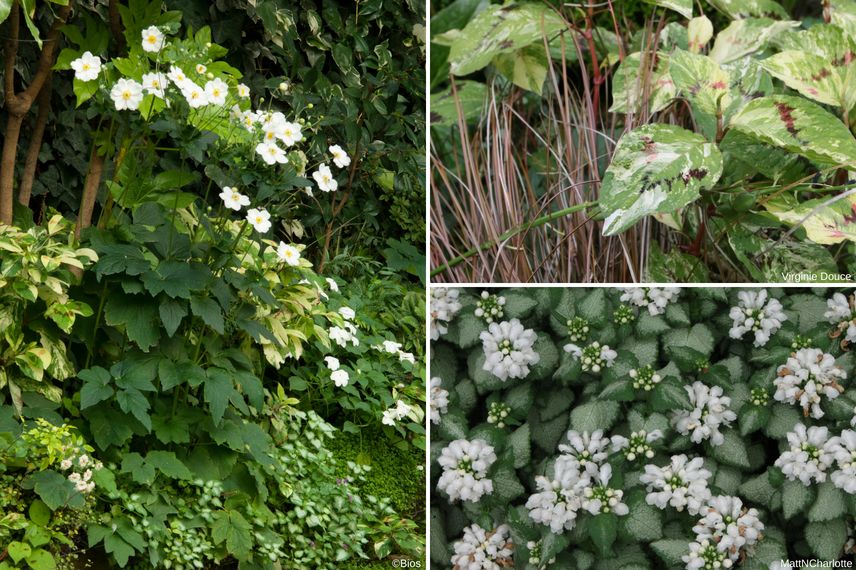

An example of a partial shade combination: Anemone japonica ‘Dreaming Swan’, Persicaria virginiana ‘Painter’s Palette’, Lamium maculatum ‘White Nancy’, beneath the canopy of a Fatsia japonica.
Read also
Japanese Anemones: Planting and CareAdding lightness to a mixed border
The Japanese anemone is a must-have for English cottage-style mixed borders, bringing subtlety and elegance. Plant them as a backdrop to climbing roses or hydrangea hedges – they will form a delightful pairing with Japanese anemones. These graceful plants with their airy habit need a community that will showcase them. The large size of these perennials allows them to fill spaces that are often tricky to occupy, such as the back of borders beneath tall trees. The shorter varieties are better suited to narrow flower beds. When combined with Astrantias, hardy geraniums, Asters, autumn daisies, Astilbes, Gauras, and salvias, varieties like ‘Andrea Atkinson’ or ‘Whirlwind’ are excellent choices for late-season interest in this densely planted border style.
Discover other Japanese Anemones
View all →Available in 1 sizes
Available in 1 sizes
Available in 1 sizes
Available in 1 sizes
Available in 3 sizes
Available in 3 sizes
Available in 1 sizes
Available in 1 sizes
Available in 4 sizes
Available in 1 sizes
Go for pink!
Announce the fires of autumn! Dare to combine bold tones by pairing a semi-double deep pink Japanese anemone (‘Rubra Plena’ or ‘Prinz Heinrich’) with the vermilion or purple flowering spikes of a Cape fuchsia or the flamboyant foliage of a European spindle. Alongside pink chrysanthemums, asters, hydrangeas in swoon-worthy hues, a magenta-pink Chinese astilbe, a lilac-flowered masterwort, or a Miscanthus sinensis Purpurascens ‘Eulalie’ and the violet umbels of a Purpletop vervain, they will herald the Indian summer. The grey foliage (artemisias, Senecio leucostachys…) adds a softness of tone that harmonises beautifully with the entire range of pink shades. Pink Japanese anemones are also the perfect companions for late-flowering roses such as China roses and musk hybrids, at whose feet they create romantic late-summer scenes.
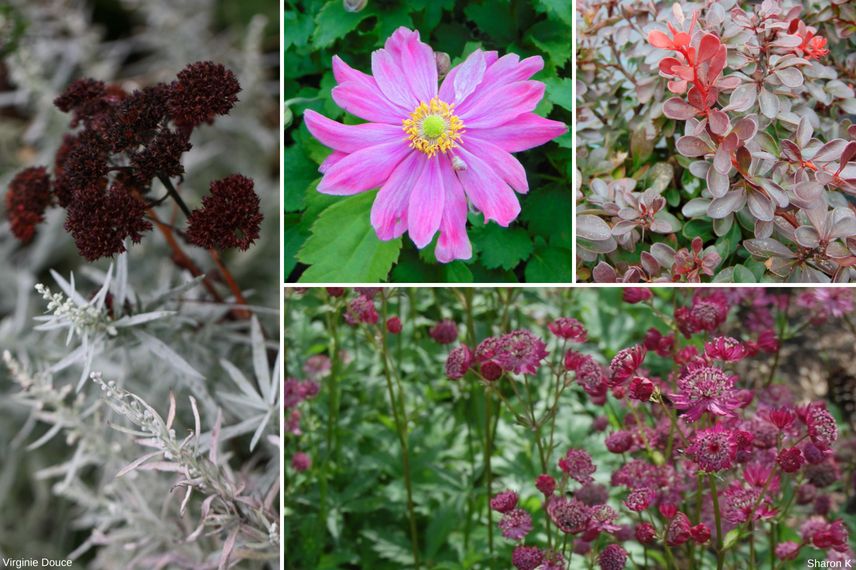

An idea for a pink, purple, and silver-toned combination: Anemone japonica ‘Prinz Heinrich’, Berberis thunbergii ‘Atropurpurea Nana’, Astrantia major ‘Lars’, Sedum ‘Jose Aubergine’ and Artemisia ludoviciana ‘Silver Queen’.
With glaucous foliage
Whether pink or white, the flowers of Japanese anemones harmonise beautifully with the metallic hues of foliage in various shades of green. Dark greens (Ferns, Hostas, Lady’s Mantle, ornamental grasses, Persicaria…), blue-grey-greens (Dead Nettle, Eryngium giganteum) or grey (Artemisia, Senecio, Dead Nettles…), will create the perfect setting to showcase their delicate tones.
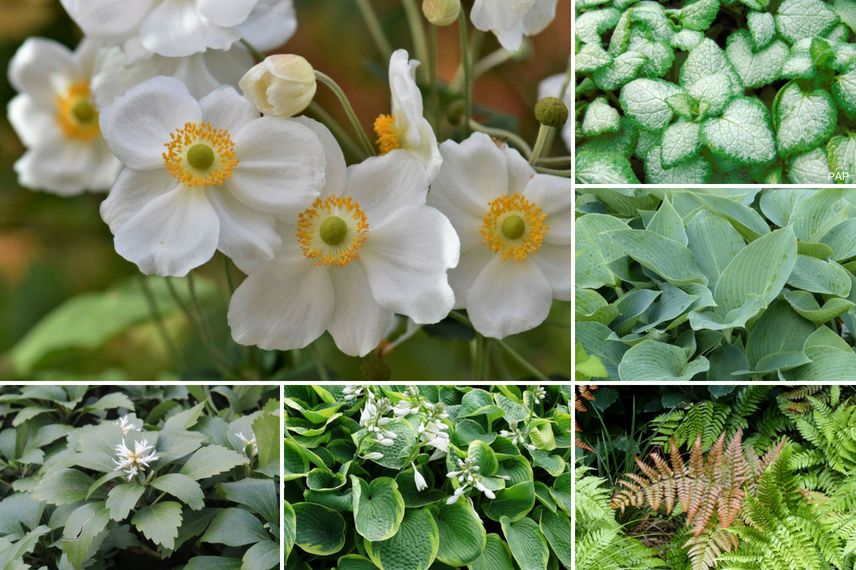

An example of pairing with foliage: Anemone japonica ‘Honorine Jobert’, Lamium maculatum ‘White Nancy’, Hosta tardiana ‘Halcyon’, Dryoteris erythrosora, Hosta sieboldiana ‘Frances Williams’, Pachysandra terminalis.
With ornamental grasses
On a base of ornamental grasses (Pennisetum, Stipa…) that form the backbone of the border, insert muted colour accents with vigorous perennials, each planted in large quantities. Alongside them, planted in groups of three or six, white or pink Japanese anemones create lovely rustic harmonies. Let the elegant white flowers of ‘Honorine Jobert’ rise above the spherical faded flower heads of Allium cristophii or the pink blooms of ‘Little Princess’ anemone contrast with the striped leaves of Miscanthus or the spiky flowers of coneflowers.
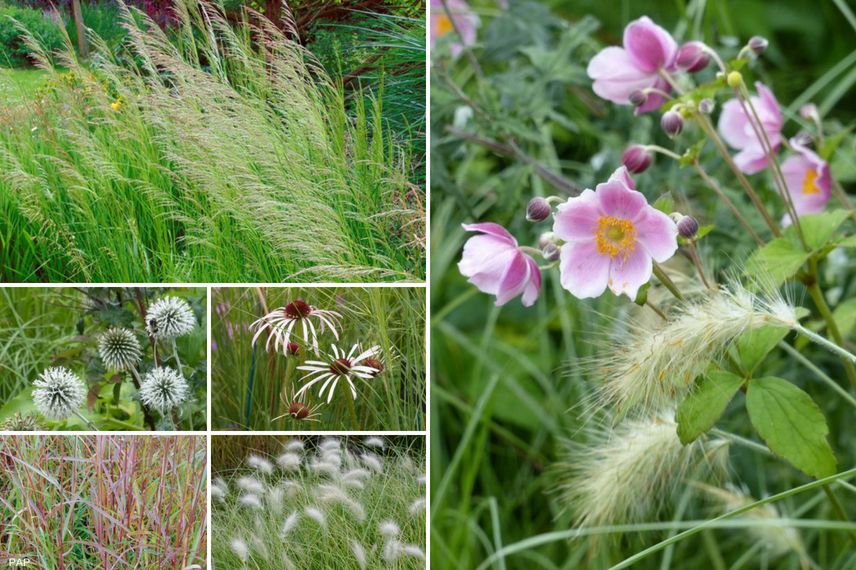

A planting combination idea with ornamental grasses: Anemone japonica ‘September Charm’, Pennisetum villosum, Deschampsia cespitosa ‘Goldschleier’, Echinops sphaerocephalus ‘Arctic Glow’, Echinacea pallida ‘Hula Dancer’, Miscanthus sinensis ‘Dronning Ingrid’.
A pure touch in a zen garden
The dominant colour in Japanese gardens is green, a myriad of greens but a palette insufficient for Western sensibilities. For us, gardens are primarily about flowers. In a Japanese-inspired border, the rarity of flowering creates the seasonal event. Opt for varieties of white anemones, with their elegant simplicity like ‘Honorine Jobert’ or ‘Andrea Atkinson’, to bring this pure, graphic note against a backdrop of various green tones, from the variegated foliage edged with cream of the Spindle Tree or an autumn camellia, which will flower when the first frosts have carried off the last anemone flowers.
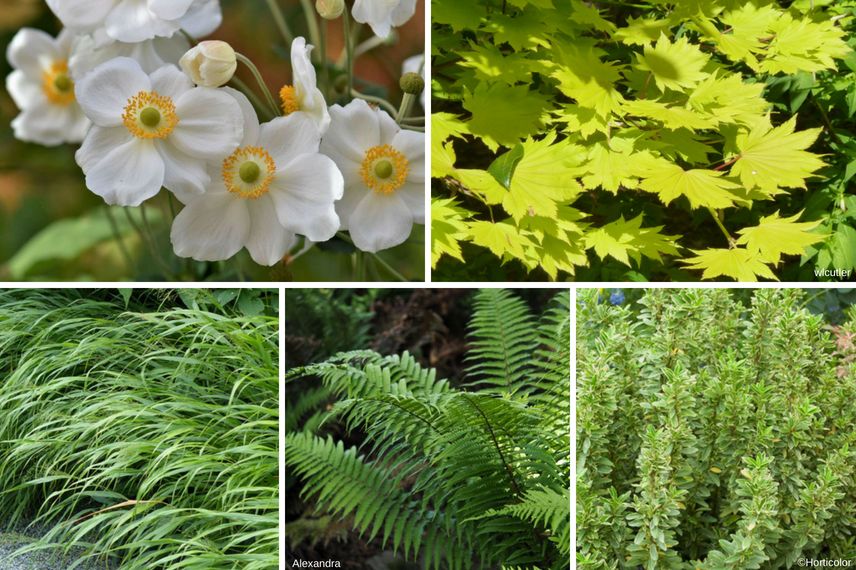

An example of a Japanese-inspired combination: Anemone japonica ‘Honorine Jobert’, Hakonechloa macra, Dryopteris wallichiana and some Euonymus japonicus ‘Microphyllus Albovariegatus’, beneath the canopy of an Acer shirasawanum ‘Aureum’.
With other perennials for autumn flowering
To prevent your flowerbed from looking too naked in autumn, pair Japanese anemones with other late-flowering perennial plants, whose foliage develops during summer, blooming from late September until the first frosts: Asters, Echinacea, Stonecrops (or Sedums), large autumn daisies, Salvias, Chrysanthemums, Cyclamen, perfoliate Eupatorium… which have the unique characteristic of still flowering at this time of year.
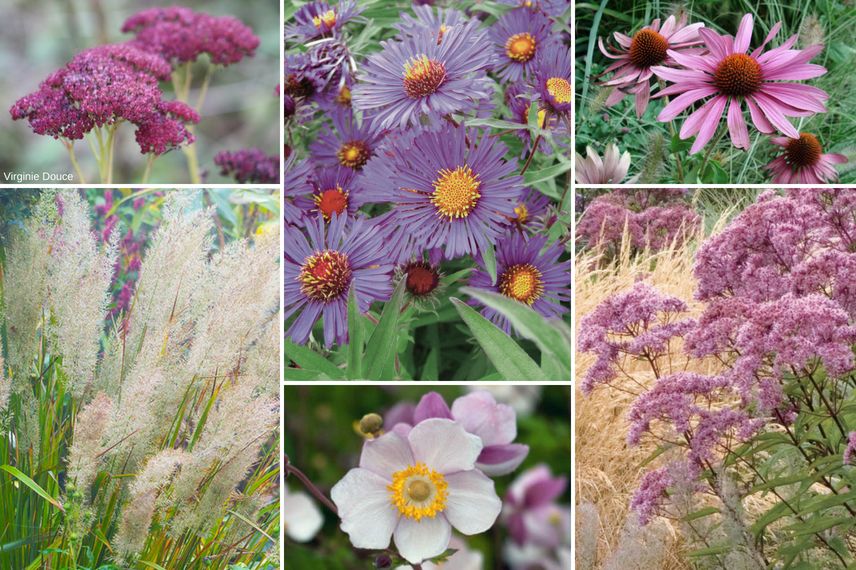

An example of an autumn pairing: Sedum spectabilis ‘Herbstfreude’, Aster novae-angliae ‘Violetta’, Echinacea purpurea, Calamagrostis bachytricha, Anemone japonica ‘Hadspen Abundance’, Eupatorium purpureum and Calamagrostis acutiflora ‘Karl Foerster’.
In a pot on a shaded terrace
Looking for a plant to brighten up your terrace in autumn? Japanese anemones thrive in pots too, adorning your outdoor space with their maculate white or pale pink flowers. Opt for compact varieties like the Anemone Fantasy Cinderella. In large containers, you can pair them with ornamental grasses such as Stipas, alongside perennial Geraniums, Dahlias, Asters and Phlox.
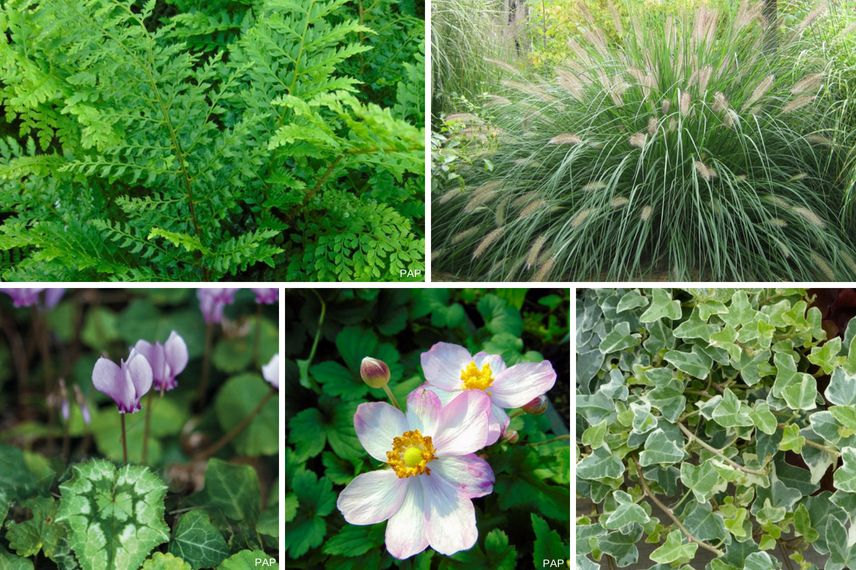

An example of a container arrangement: Polystichum setiferum ‘Proliferum’, Pennisetum alopecuroides ‘Gelbstiel’, Cyclamen hederifolium, Anemone japonica ‘Fantasy Cinderella’ and Hedera helix ‘Mini Ester’ cascading over the pot.
To go further
- Subscribe!
- Contents


































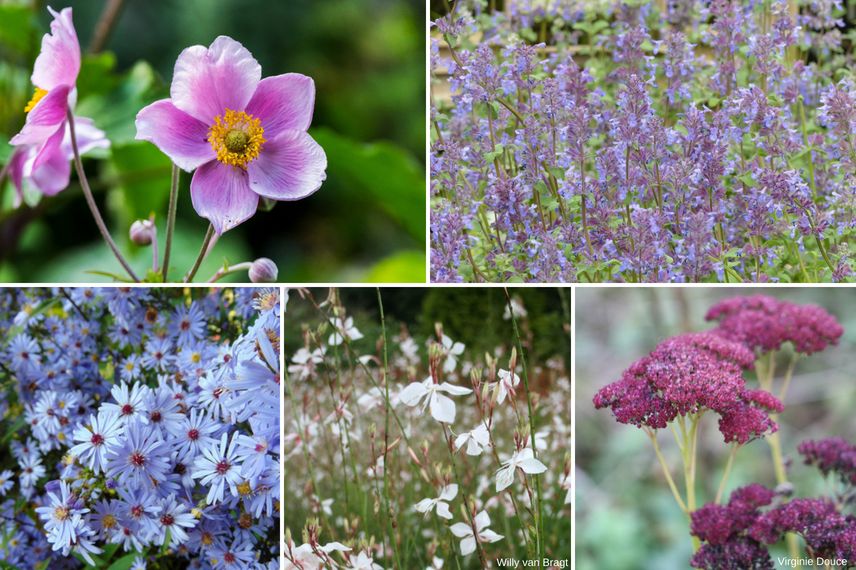

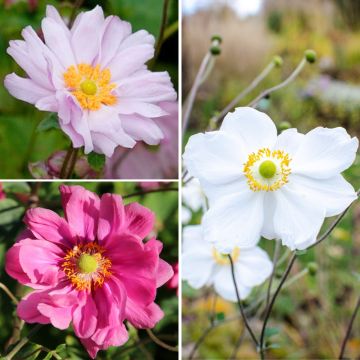
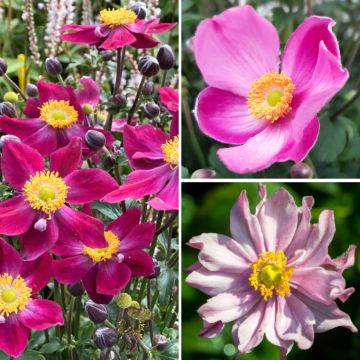
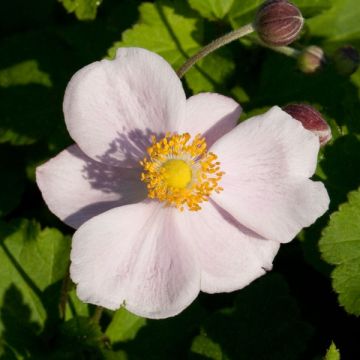
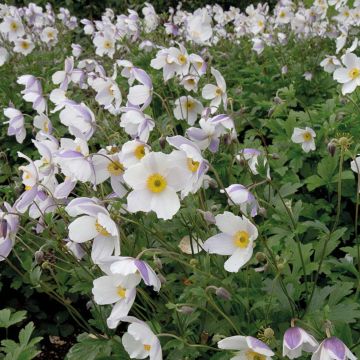
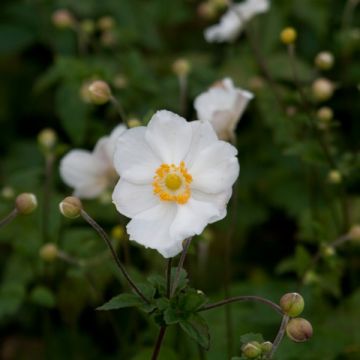
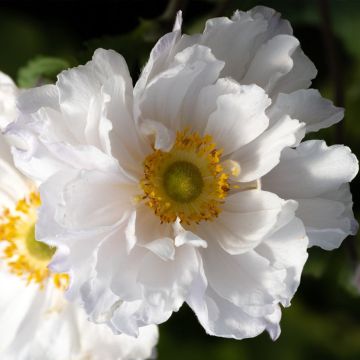
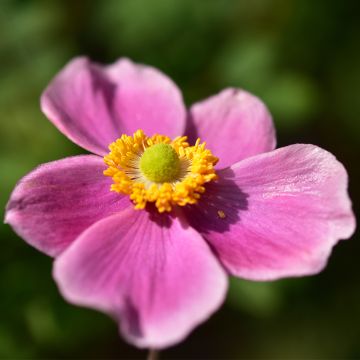
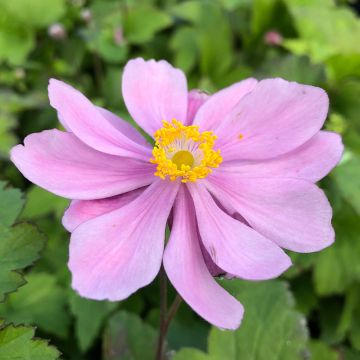
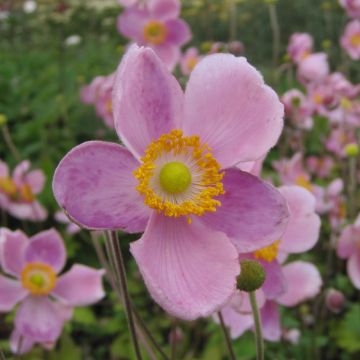
Comments